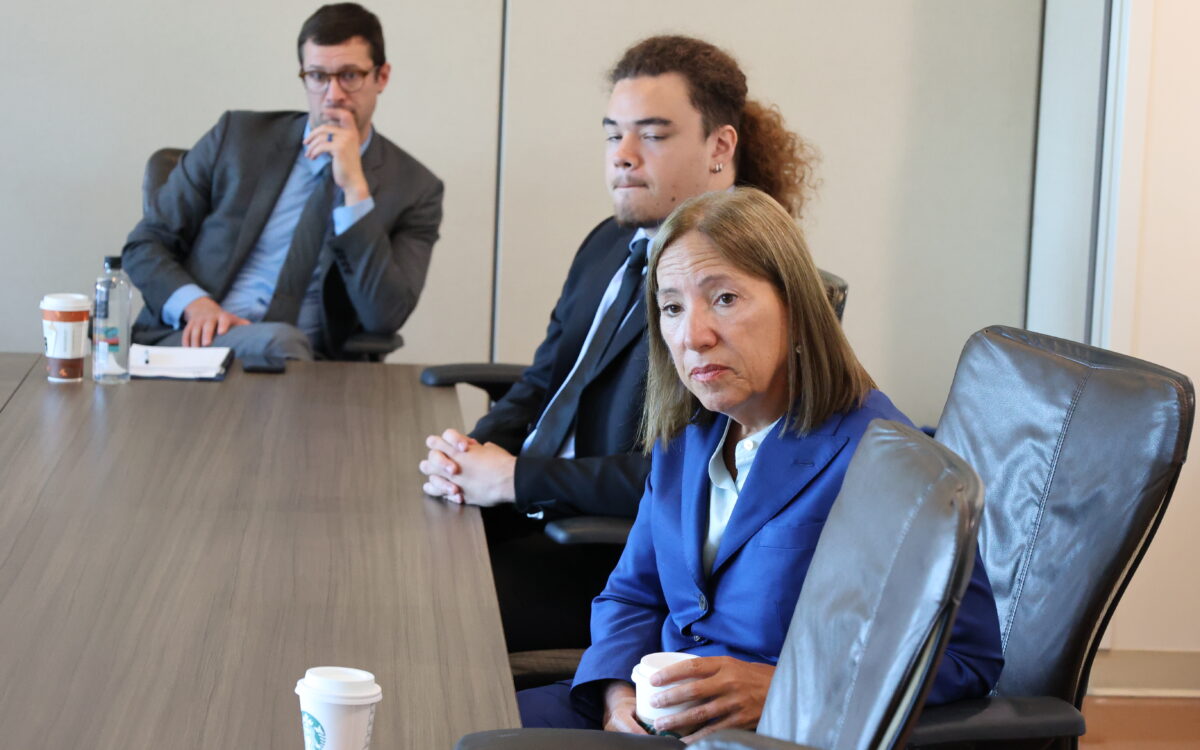California State University should delay voting on a proposed tuition increase and potentially reconsider the idea, California Lt. Gov Eleni Kounalakis and student leaders urged Friday.
Kounalakis, who sits on CSU’s board of trustees, met privately with students at Cal State Los Angeles, where they strategized over how to move forward as CSU trustees appear ready to approve annual tuition increases of 6% at their next meeting in September.
The discussion was closed to the media, but in interviews afterward, Kounalakis and student leaders said they want CSU to take time to study the potential consequences of the tuition hike before implementing it, saying it could have negative impacts for many students whose tuition is not covered by state aid. CSU officials have said that about 60% of students wouldn’t be affected by the hike because they get their tuition covered by Cal Grants and other financial aid.
“They need to delay the vote. They fall back on this notion that 60% of students get student aid, as if the other 40% will be fine shouldering a burden of $840 million over the next five years. My experience is that for our students, regardless of whether they get tuition assistance or not, they are struggling to make ends meet,” Kounalakis said.
“I don’t think they can afford $840 million, but we will know for sure if we study it,” she added, referring to the $840 million the proposed tuition hike is estimated to generate in revenue for CSU.
CSU did not immediately return a request for comment Friday.
CSU is mulling the tuition increase to help bridge a $1.5 billion funding gap facing the system. Kounalakis suggested that CSU could look for other ways to make up that funding, such as advocating for more funding from lawmakers or cutting salaries for the highest-paid administrators in the system.
The initial hike would equate to a $342 increase for full-time undergraduate students.
Dominic Quan Treseler, the president of the Cal State Student Association and a political science major at San Jose State, said that in some ways, students understand the rationale for a tuition increase. Students see buildings on their campuses that are in poor condition and feel the impacts of underfunded student support services like counseling that could benefit from the university generating more revenue.
“I think there’s a way to do a raise in a way that makes sense for students,” he said. “But this is not that way.”
Treseler noted that one-third of the revenue generated from the tuition increases will go toward financial aid, but he said he’d like to see more of the revenue go toward services that support students. That could include hiring more counselors, increasing basic needs services or adding more housing, for example. “Things that really promote student retention and improve graduation rates,” he said.
Treseler agreed with Kounalakis that the vote should be delayed beyond September, saying that it’s important that any decision involves the input of incoming Chancellor Mildred García. García doesn’t start in her role as permanent chancellor until Oct. 1.
Even though 60% of students won’t be impacted by the tuition hike, the remaining 40% of students includes many who are particularly vulnerable to such increases, Treseler said. That includes undocumented students and students who have already used up all of their Cal Grants, which students can receive for four years.
“There was a quote from one of the trustees that this is a modest increase. $340 is not a modest increase for many of our students,” Treseler said. “We don’t really appreciate the framing. We’re not talking about 40% of our highest-income students.”
By implementing the increase, the fallout could be that some students choose not to attend at all, Kounalakis said. She noted that many trustees “are enormously proud of the fact that the CSU is one of the most powerful drivers of social mobility and economic mobility anywhere in the country, maybe anywhere in the world.” They should consider what increasing tuition “will do to that fact,” she added.
“How many students won’t come? How many students drop out? How many students don’t graduate in four years or in six years? We should not even be considering this increase without data to show what the impact on our students and on our overall goals of providing opportunities for social mobility,” she said.
